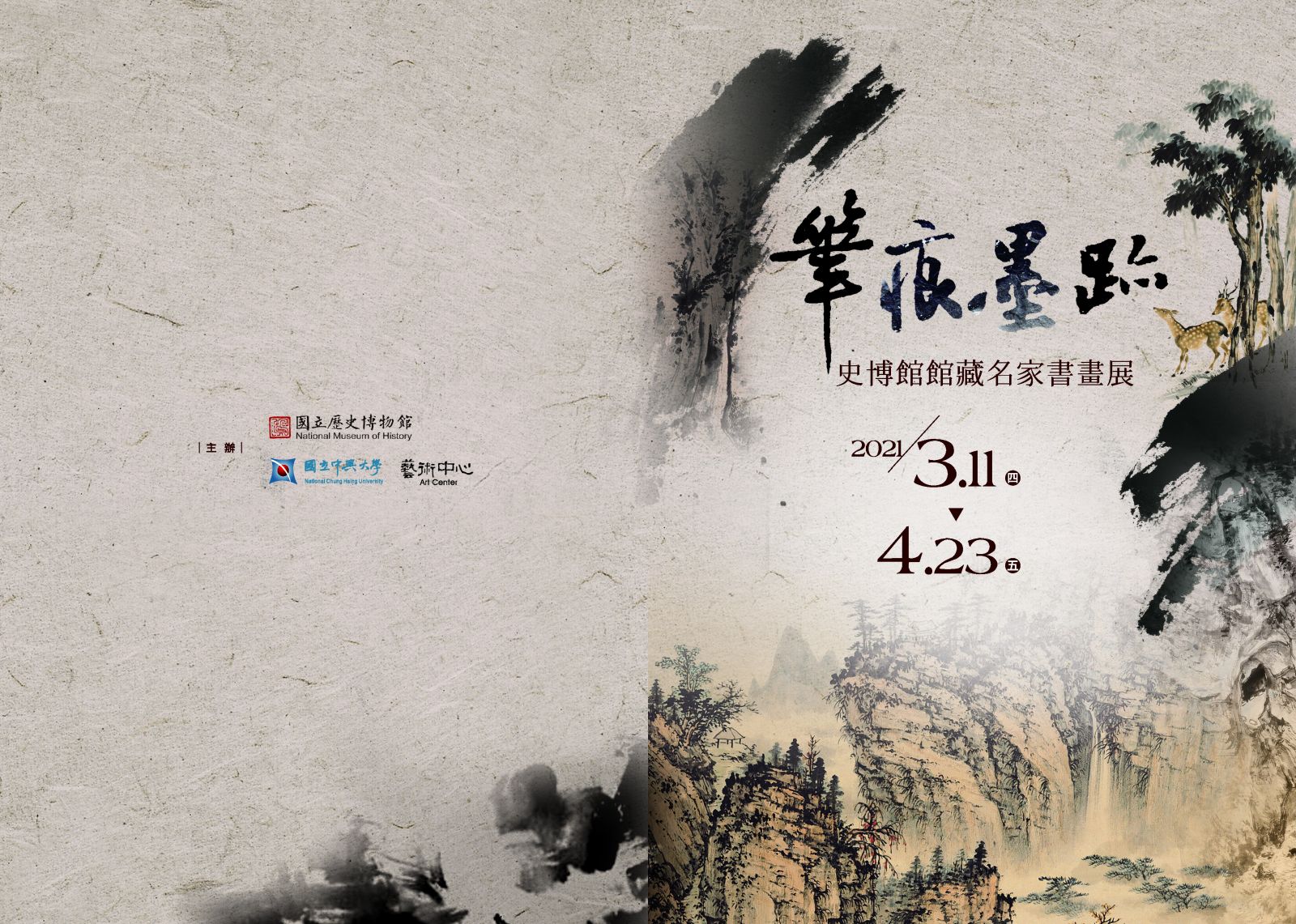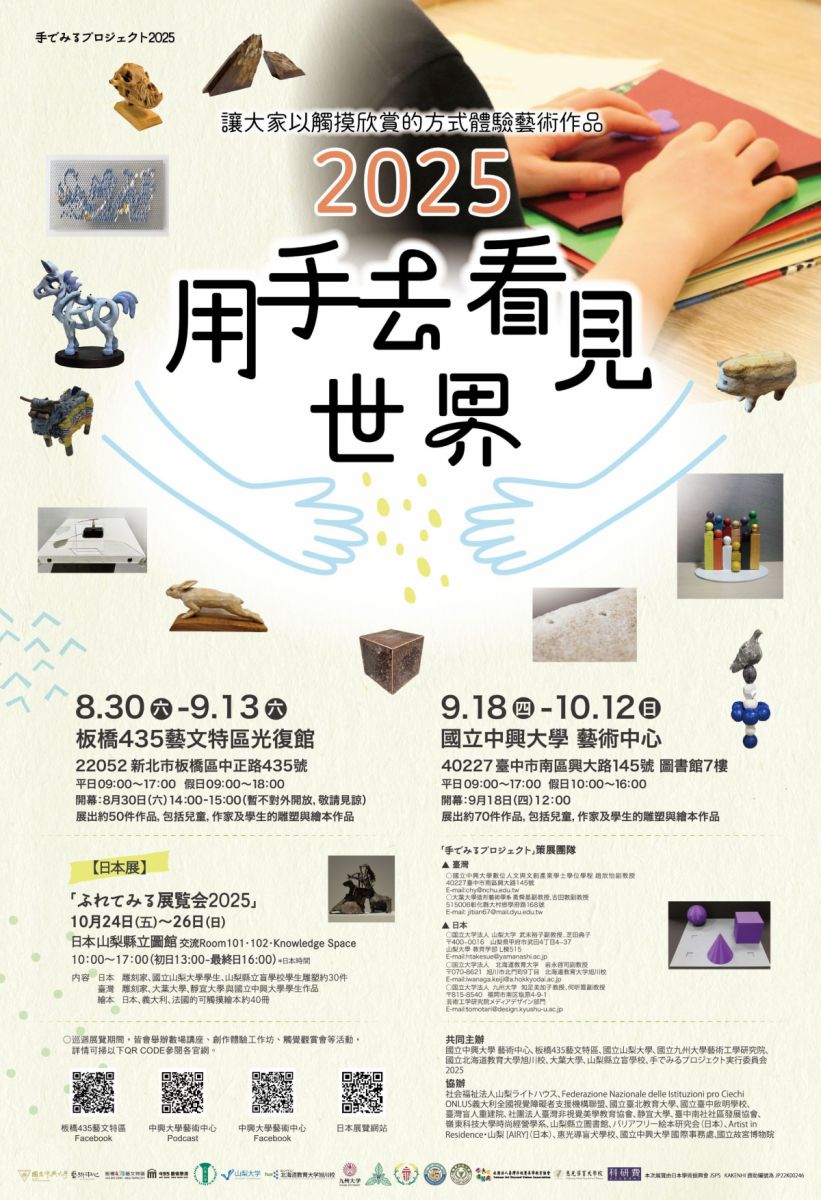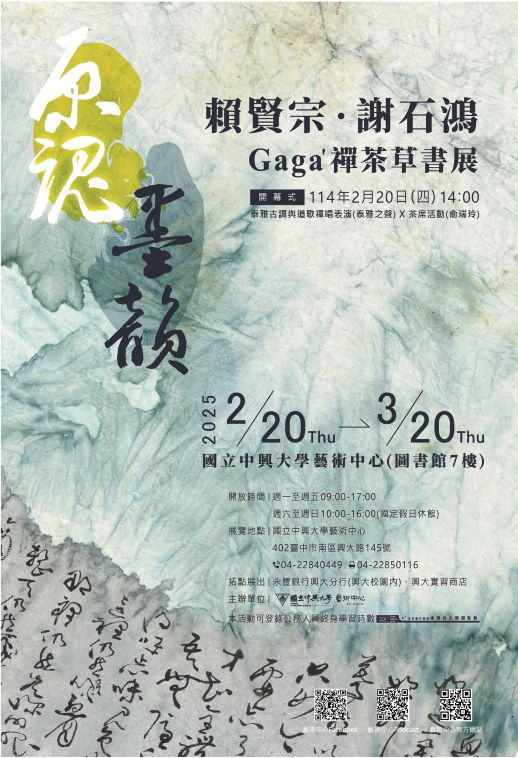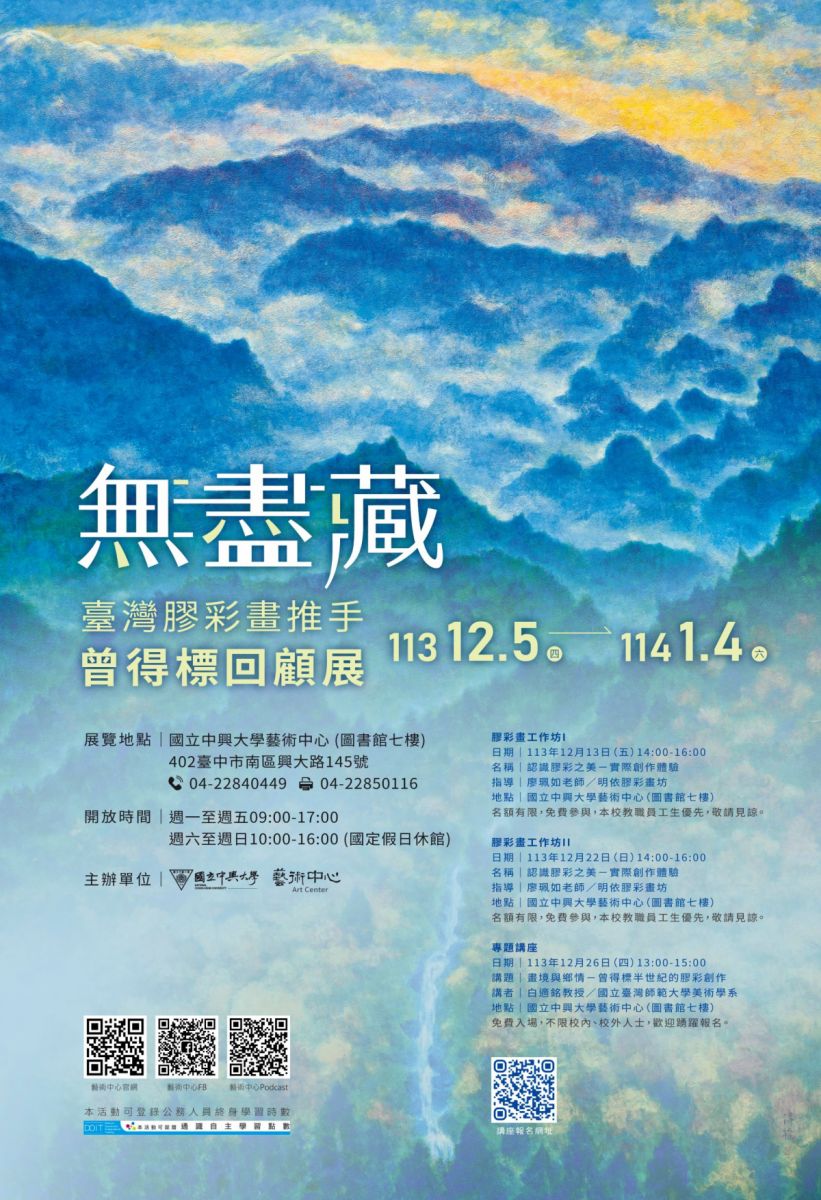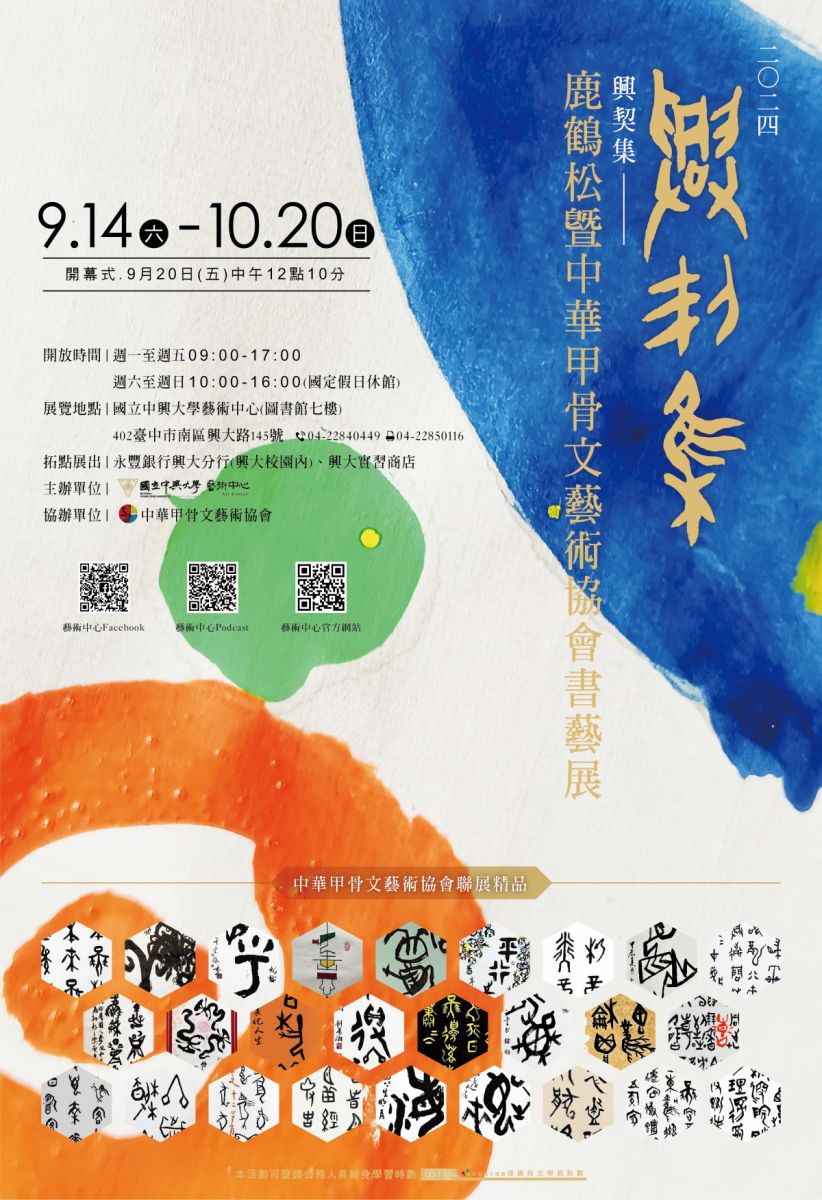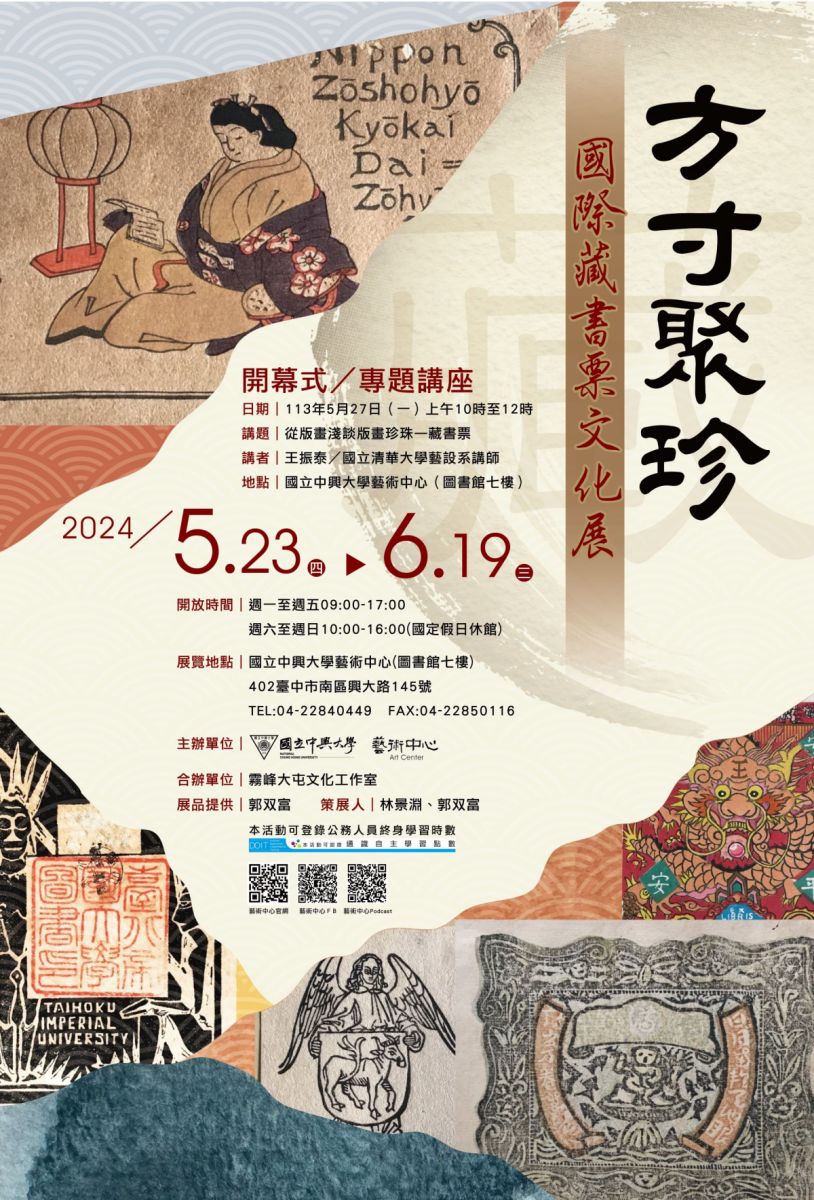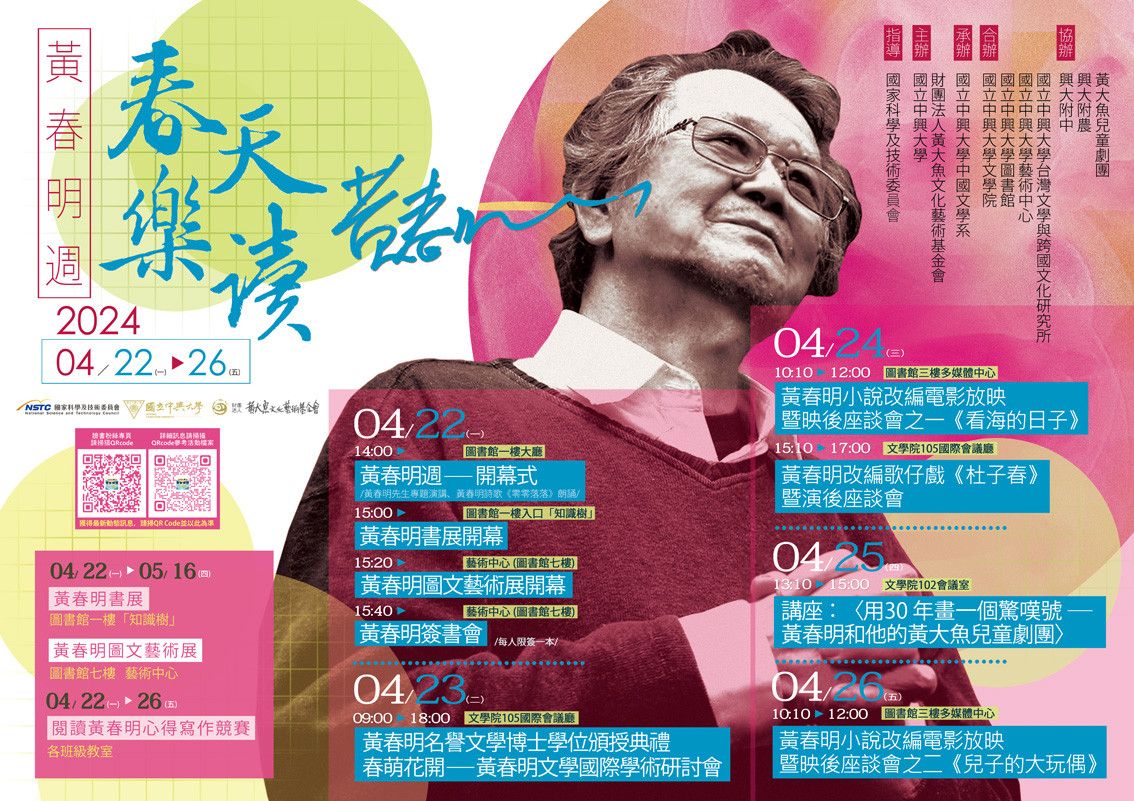Traces of Brush Ink: Celebrated Artists' Works of Calligraphy and Ink Wash Painting in NMH Collection
Art evolves with time, and will culminate into valuable culture and subject consciousness that embraces the past and the present. For the art of calligraphy and ink-wash painting, the cultural significances and value are the core of the subject consciousness. Literati art is nurtured on the artist’s homeland, resembling local culture and characteristics with distinctive expressions. Different landscapes and environments evoke diverted feelings, cultivate differences in sentiments and aesthetic tastes, which lead to the various painting schools based in distinct areas. Taiwan, with its unique beauty, has nurtured a characteristic world of brush and ink expression that includes influences by the environment and conveys an aesthetic of life and vitality.
Modern Taiwanese literati art development is like the evolution of society. The art of calligraphy and painting gradually absorbs external cultural influences and internal spirits, and moves forward by inheriting and innovating. In 1687, Taiwan was incorporated into the Qing Imperial Examination system. Since then schooling and tutoring had been prospering throughout Taiwan. As the literate population increased, the art of calligraphy was gradually emphasized. Famous calligraphers and painters in coastal regions of China were hired to teach in Taiwan, featuring calligraphic model emulation, and painting in figures and the four noble plants. During the Japan period, western-style art education introduced brought with it the concept of realism. Such an aesthetic perspective led ink-wash painting to change from the Chinese Southern style to delicate brush work similar to gouache painting. At the same time, calligraphy was infiltrated with the Japanese adapted stele school fashion from the Six Dynasties. With the arrival of Republican government, diverse copies of stele rubbing and copybook, along with famous calligraphers and painters from China gathered in Taiwan, established a solid foundation for the development of calligraphy and ink-wash painting.
Looking back on our predecessors’ accomplishments, it is obvious that a diversified foundation has become the characteristics for the art of Taiwan. As the society progresses and opens, ideas and expressions from the West are introduced, ink-wash painting subjects no longer limited themselves in traditional four noble plants or Taoist and Buddhist figures, but by adopting techniques of Western sketching and draftsmanship with fundamental techniques of traditional ink and brushwork, evolves into a style with literati concerns and local sentiments as well as distinct zeitgeist and personal styles. These works map out a new territory for the art of calligraphy and painting, epitomizing an island culture that merits in the spirit of inclusiveness.
For more than six decades since the NMH’s inauguration, numerous exhibitions focusing on the genre of calligraphy, ink-wash painting, and a substantial amount of literati art collection are the representation of our culture richness. This exhibition collaborated with the Art Center of National Chung Hsing University contains carefully selected calligraphy together with ink-wash paintings from the NMH collection. Showcasing the characteristics of brush and ink arts along with the bilingual data from NMH, aims to create a more comprehensive art experiences for a wider range of visitors. Walking through the exhibit, visitors are allowed to trace the spiritual and artistic paths of various artists, and immerse in the charming river of Taiwanese literati art development.
Art evolves with time, and will culminate into valuable culture and subject consciousness that embraces the past and the present. For the art of calligraphy and ink-wash painting, the cultural significances and value are the core of the subject consciousness. Literati art is nurtured on the artist’s homeland, resembling local culture and characteristics with distinctive expressions. Different landscapes and environments evoke diverted feelings, cultivate differences in sentiments and aesthetic tastes, which lead to the various painting schools based in distinct areas. Taiwan, with its unique beauty, has nurtured a characteristic world of brush and ink expression that includes influences by the environment and conveys an aesthetic of life and vitality.
Modern Taiwanese literati art development is like the evolution of society. The art of calligraphy and painting gradually absorbs external cultural influences and internal spirits, and moves forward by inheriting and innovating. In 1687, Taiwan was incorporated into the Qing Imperial Examination system. Since then schooling and tutoring had been prospering throughout Taiwan. As the literate population increased, the art of calligraphy was gradually emphasized. Famous calligraphers and painters in coastal regions of China were hired to teach in Taiwan, featuring calligraphic model emulation, and painting in figures and the four noble plants. During the Japan period, western-style art education introduced brought with it the concept of realism. Such an aesthetic perspective led ink-wash painting to change from the Chinese Southern style to delicate brush work similar to gouache painting. At the same time, calligraphy was infiltrated with the Japanese adapted stele school fashion from the Six Dynasties. With the arrival of Republican government, diverse copies of stele rubbing and copybook, along with famous calligraphers and painters from China gathered in Taiwan, established a solid foundation for the development of calligraphy and ink-wash painting.
Looking back on our predecessors’ accomplishments, it is obvious that a diversified foundation has become the characteristics for the art of Taiwan. As the society progresses and opens, ideas and expressions from the West are introduced, ink-wash painting subjects no longer limited themselves in traditional four noble plants or Taoist and Buddhist figures, but by adopting techniques of Western sketching and draftsmanship with fundamental techniques of traditional ink and brushwork, evolves into a style with literati concerns and local sentiments as well as distinct zeitgeist and personal styles. These works map out a new territory for the art of calligraphy and painting, epitomizing an island culture that merits in the spirit of inclusiveness.
For more than six decades since the NMH’s inauguration, numerous exhibitions focusing on the genre of calligraphy, ink-wash painting, and a substantial amount of literati art collection are the representation of our culture richness. This exhibition collaborated with the Art Center of National Chung Hsing University contains carefully selected calligraphy together with ink-wash paintings from the NMH collection. Showcasing the characteristics of brush and ink arts along with the bilingual data from NMH, aims to create a more comprehensive art experiences for a wider range of visitors. Walking through the exhibit, visitors are allowed to trace the spiritual and artistic paths of various artists, and immerse in the charming river of Taiwanese literati art development.
►Lecture Information
Title: Traces of Brush and Ink- Overview the Art History of Calligraphy and Ink-Wash Painting in Taiwan
Speaker:Tsai, Yao-Ching/ Assistant Researcher, National Museum of History
Date: 13:30-15:30, 11th March, 2021
Venue: Art Center, NCHU (The 7th floor in Library building)
Note: Admission Free, Mandarin as the medium of instruction
Speaker:Tsai, Yao-Ching/ Assistant Researcher, National Museum of History
Date: 13:30-15:30, 11th March, 2021
Venue: Art Center, NCHU (The 7th floor in Library building)
Note: Admission Free, Mandarin as the medium of instruction
Official Website: http://art.nchu.edu.tw/
FB Fanpage: http://www.facebook.com/302845043190726/
Podcast: https://open.firstory.me/user/nchuart/platforms
FB Fanpage: http://www.facebook.com/302845043190726/
Podcast: https://open.firstory.me/user/nchuart/platforms
